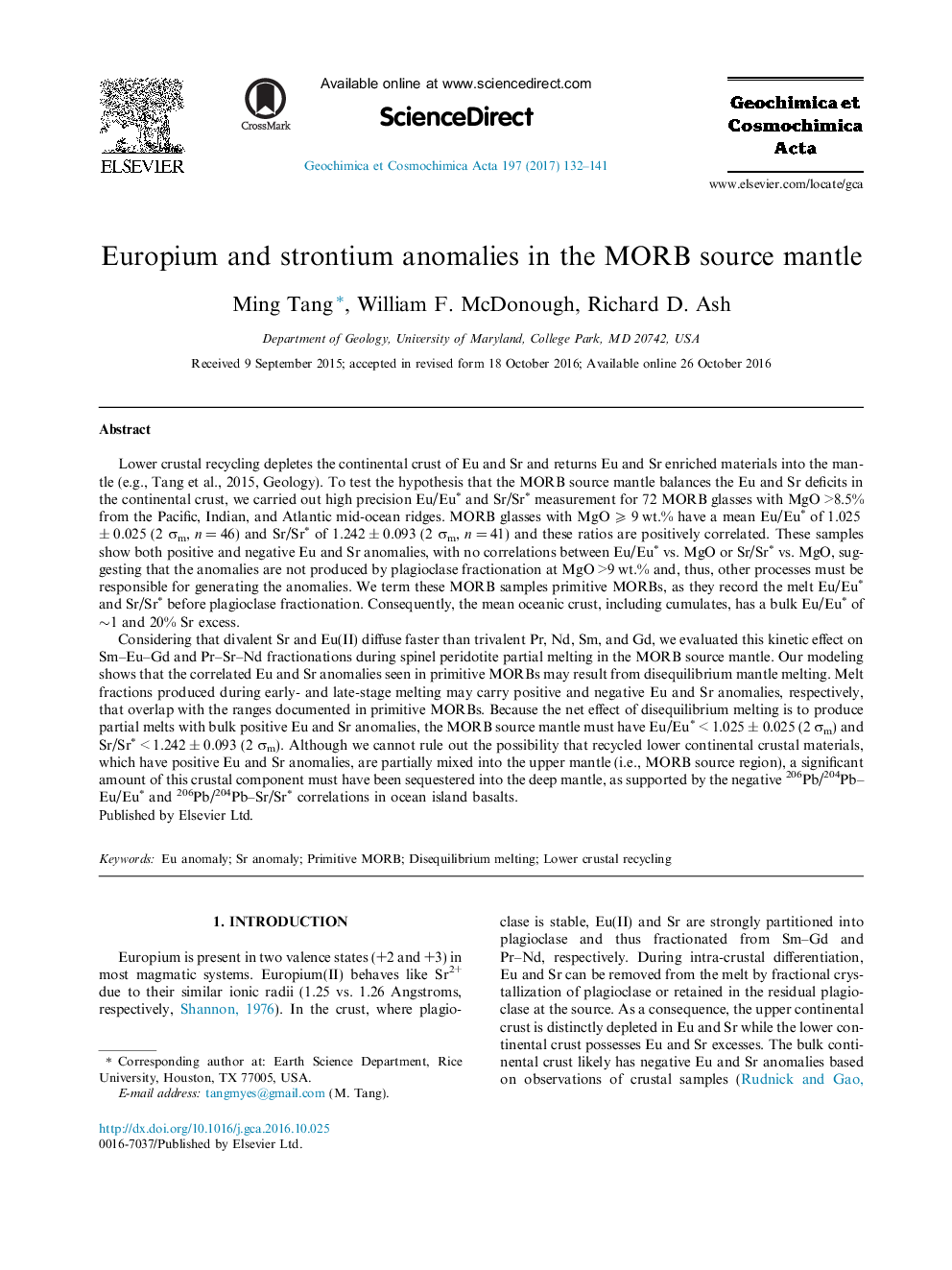| کد مقاله | کد نشریه | سال انتشار | مقاله انگلیسی | نسخه تمام متن |
|---|---|---|---|---|
| 4701709 | 1637960 | 2017 | 10 صفحه PDF | دانلود رایگان |
Lower crustal recycling depletes the continental crust of Eu and Sr and returns Eu and Sr enriched materials into the mantle (e.g., Tang et al., 2015, Geology). To test the hypothesis that the MORB source mantle balances the Eu and Sr deficits in the continental crust, we carried out high precision Eu/Eu∗ and Sr/Sr∗ measurement for 72 MORB glasses with MgO >8.5% from the Pacific, Indian, and Atlantic mid-ocean ridges. MORB glasses with MgO ⩾ 9 wt.% have a mean Eu/Eu∗ of 1.025 ± 0.025 (2 σm, n = 46) and Sr/Sr∗ of 1.242 ± 0.093 (2 σm, n = 41) and these ratios are positively correlated. These samples show both positive and negative Eu and Sr anomalies, with no correlations between Eu/Eu∗ vs. MgO or Sr/Sr∗ vs. MgO, suggesting that the anomalies are not produced by plagioclase fractionation at MgO >9 wt.% and, thus, other processes must be responsible for generating the anomalies. We term these MORB samples primitive MORBs, as they record the melt Eu/Eu∗ and Sr/Sr∗ before plagioclase fractionation. Consequently, the mean oceanic crust, including cumulates, has a bulk Eu/Eu∗ of ∼1 and 20% Sr excess.Considering that divalent Sr and Eu(II) diffuse faster than trivalent Pr, Nd, Sm, and Gd, we evaluated this kinetic effect on Sm–Eu–Gd and Pr–Sr–Nd fractionations during spinel peridotite partial melting in the MORB source mantle. Our modeling shows that the correlated Eu and Sr anomalies seen in primitive MORBs may result from disequilibrium mantle melting. Melt fractions produced during early- and late-stage melting may carry positive and negative Eu and Sr anomalies, respectively, that overlap with the ranges documented in primitive MORBs. Because the net effect of disequilibrium melting is to produce partial melts with bulk positive Eu and Sr anomalies, the MORB source mantle must have Eu/Eu∗ < 1.025 ± 0.025 (2 σm) and Sr/Sr∗ < 1.242 ± 0.093 (2 σm). Although we cannot rule out the possibility that recycled lower continental crustal materials, which have positive Eu and Sr anomalies, are partially mixed into the upper mantle (i.e., MORB source region), a significant amount of this crustal component must have been sequestered into the deep mantle, as supported by the negative 206Pb/204Pb–Eu/Eu∗ and 206Pb/204Pb–Sr/Sr∗ correlations in ocean island basalts.
Journal: Geochimica et Cosmochimica Acta - Volume 197, 15 January 2017, Pages 132–141
